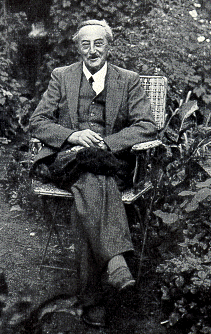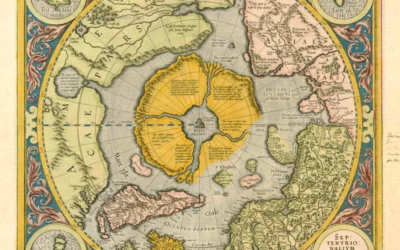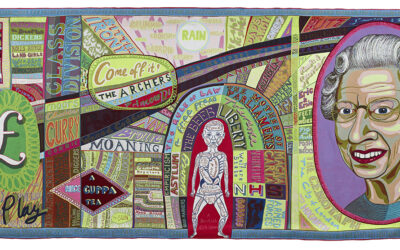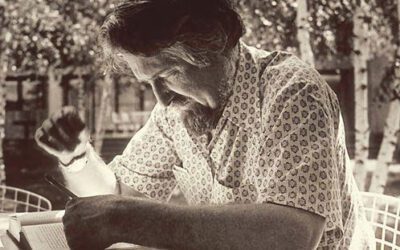
Who Was Arnold van Gennep?
Arnold van Gennep (1873-1957) was a pioneering French anthropologist and folklorist who made significant contributions to the study of rituals, particularly rites of passage. His seminal work, “Les rites de passage” (The Rites of Passage), published in 1909, provided a comprehensive analysis of the ceremonial patterns that mark an individual’s transition from one social status to another. Van Gennep’s insights into the structure and function of these rituals have had a profound influence on anthropology, sociology, psychotherapy practice, and religious studies, offering a powerful framework for understanding the role of ritual in human societies.
The Structure of Rites of Passage
Van Gennep’s key insight was that rites of passage across cultures share a common three-part structure, which he termed separation, transition (or liminality), and incorporation (or re-aggregation).
Separation involves the individual or group symbolically detaching from their previous social status or identity. This may involve physical separation from the community, shedding of previous markers of identity, or engaging in purification rituals.
Transition, or liminality, is the period between states, where the individual no longer holds their previous status but has not yet acquired their new one. This is often a time of ambiguity, uncertainty, and symbolic inversion of normal social structures.
Incorporation marks the completion of the passage, where the individual is ceremonially reintroduced to society in their new status. This often involves the acquisition of new markers of identity, the bestowal of new rights and responsibilities, and festive celebration by the community.
Van Gennep argued that this tripartite structure could be found in a wide variety of rituals marking key life transitions, such as birth, puberty, marriage, and death, as well as in initiation rites into religious societies and occupational guilds.
The Functions of Rites of Passage
For van Gennep, rites of passage serve several important functions in human societies.
First, they provide a way of clearly demarcating and managing changes in an individual’s social status and identity. By ritually marking these transitions, societies make them explicit and controllable, reducing ambiguity and potential for social disruption.
Second, rites of passage serve to inculcate the values, norms, and sacred knowledge of the society in individuals as they transition to new roles. The liminal phase, in particular, is a time of intense learning, where initiates are taught the esoteric wisdom needed for their new status.
Third, these rituals function to maintain and regenerate the social order itself. By symbolically enacting the death and rebirth of individuals into new statuses, rites of passage reaffirm the structure and values of society, ensuring cultural continuity across generations.
Finally, rites of passage have a profound psychological function for individuals, helping them to process and make meaning of major life changes. The ritual structure provides a container for the complex emotions and uncertainties of transition, offering a sense of support, meaning, and reintegration.
The Concept of Liminality
One of van Gennep’s most influential contributions was his concept of liminality – the ambiguous, in-between state that characterizes the transition phase of rites of passage. In the liminal period, individuals are “betwixt and between”, no longer holding their previous status but not yet incorporated into their new one.
Van Gennep observed that this liminal state is often marked by a symbolic inversion or dissolution of normal social structures and hierarchies. Initiates may be treated as equals regardless of their previous social status, may engage in behaviors or wear clothing that would normally be prohibited, and may be seen as embodying sacred or dangerous powers.
This idea of liminality as a sacred, transformative, and potentially subversive state has been hugely influential in anthropology and cultural studies. Later thinkers like Victor Turner have expanded on the concept, seeing liminality as a key source of cultural creativity and social change.
Rites of Passage and the Sacred
For van Gennep, rites of passage are fundamentally religious phenomena, marked by an encounter with the sacred. The transition from one social status to another is not merely a secular change, but a spiritual transformation – a death and rebirth of the self.
This sacred dimension is particularly evident in the liminal phase, where initiates are often seen as being in a sacred, otherworldly space, in contact with divine or supernatural forces. The trials and teachings of this phase are meant to bring about a profound ontological change in the individual, aligning them with the sacred order of the cosmos.
Van Gennep’s insights thus highlight the deep interconnections between social structure and spiritual belief in human societies. Rites of passage, he shows, are not merely social conventions, but profound spiritual dramas that enact and affirm a society’s sacred worldview.
The Universality of Rites of Passage
While the specific content of rites of passage varies greatly across cultures, van Gennep argued that their basic structure and function are universal. Across the world and throughout history, human societies have marked major life transitions with rituals of separation, transition, and incorporation.
This universality, for van Gennep, points to the fundamental similarities in how human cultures deal with change and transition. Despite surface differences, all societies face the same basic challenges of managing social status, transmitting culture, and making meaning of the life cycle.
At the same time, van Gennep was careful to emphasize the importance of studying rites of passage in their specific cultural contexts. While the overall structure may be universal, the particular symbols, beliefs, and social dynamics at play in any given ritual can only be understood through detailed ethnographic analysis.
Legacy and Influence
Van Gennep’s work on rites of passage has had a profound and enduring influence on the social sciences and humanities. His insights have been taken up and expanded by generations of scholars, informing research on a wide range of topics from religion and ritual to identity and social change.
In anthropology, van Gennep’s ideas have been foundational for the study of ritual and symbolism. Later scholars like Victor Turner, Clifford Geertz, and Mary Douglas have all built on his work, exploring the dynamics of liminality, the symbolic dimensions of social structure, and the role of ritual in cultural meaning-making.
Van Gennep’s influence has also extended far beyond anthropology. His concept of liminality, in particular, has been taken up in fields as diverse as literature, psychology, and organizational studies. The idea of the liminal as a space of transformation and creativity has proven enormously generative across disciplines.
In the study of religion, van Gennep’s work has been seminal for understanding the structure and function of religious rituals. His insights have been applied to the analysis of initiation rites, pilgrimage, and other forms of religious passage, illuminating the ways in which these practices transform individuals and affirm sacred worldviews.
Van Gennep’s legacy is also evident in the growing field of ritual studies, which takes ritual as its central focus of analysis. Here, his tripartite model of rites of passage remains a key theoretical touchstone, even as scholars have expanded and problematized his original formulations.
Critiques and Developments
While van Gennep’s work has been enormously influential, it has also been subject to various critiques and developments over the years.
Some scholars have questioned the universality of van Gennep’s tripartite model, pointing to examples of rituals that don’t neatly fit his schema. Others have argued that his focus on the structure of rites of passage neglects the importance of their symbolic content and cultural meaning.
Feminist anthropologists have critiqued van Gennep’s work for its lack of attention to gender dynamics in rites of passage. Many transition rituals, they point out, serve to affirm and reproduce patriarchal social structures, a dimension largely absent from van Gennep’s analysis.
Postcolonial scholars have also questioned the cultural biases inherent in van Gennep’s work, arguing that his model of rites of passage reflects Western assumptions about individualism, progress, and the linearity of the life course. Non-Western cultures, they suggest, may understand life transitions in very different terms.
Despite these critiques, van Gennep’s core insights have proven remarkably resilient. Even as his specific formulations have been questioned and developed, his basic understanding of the significance of ritual in managing life transitions remains foundational to the study of religion and society.
Rites of Passage in the Contemporary World
While van Gennep’s work focused primarily on traditional, small-scale societies, his ideas remain deeply relevant for understanding ritual and transition in the contemporary world.
In many ways, the disruptive forces of modernity have only intensified the need for rites of passage. As traditional social structures and belief systems break down, individuals are left to navigate life’s transitions with fewer clear cultural scripts. In this context, the desire for rituals that provide meaning, structure, and a sense of belonging remains as strong as ever.
We see this in the ongoing importance of traditional rites of passage like weddings, funerals, and coming-of-age ceremonies. Even as their specific forms evolve, these rituals continue to provide a way for individuals and communities to mark and make sense of key life transitions.
At the same time, new forms of rites of passage are emerging to meet the needs of a changing world. Secular coming-of-age rituals, divorce ceremonies, and gender transition celebrations all testify to the enduring human need for rituals that acknowledge and affirm life’s major passages.
In organizational and professional contexts, too, the importance of rites of passage is increasingly recognized. Many companies now offer onboarding rituals for new hires, leadership transition ceremonies, and retirement celebrations that draw on the principles of van Gennep’s model.
These contemporary rites of passage may look very different from the traditional rituals van Gennep studied. But they serve many of the same essential functions – providing structure and meaning in times of transition, affirming social bonds and values, and connecting individuals to a larger sense of purpose and identity.
Arnold van Gennep’s Legacy
Arnold van Gennep’s theory of rites of passage stands as one of the most illuminating and enduring contributions to the understanding of human ritual and transition. By identifying the universal structure of these ceremonies and explicating their social, psychological, and spiritual functions, van Gennep provided a powerful framework for understanding how individuals and societies navigate change.
While his work has not been without critique, the core insights of van Gennep’s model have proven remarkably robust. The concepts of separation, liminality, and incorporation continue to provide a generative lens for analyzing rituals of transition across cultures and historical periods.
Moreover, van Gennep’s ideas remain deeply relevant for understanding the challenges and opportunities of living in a time of rapid social change. As traditional structures of meaning and belonging break down, the need for rituals that provide a sense of structure, purpose, and sacred significance in navigating life’s transitions is more pressing than ever.
As we move forward into an uncertain future, van Gennep’s work reminds us of the enduring importance of ritual in human life. It invites us to consider how we might create new rites of passage that speak to the needs of our time – rituals that provide meaning and support in navigating the complex transitions of a rapidly changing world.
At the same time, van Gennep’s insights challenge us to approach the study of ritual with a deep respect for cultural diversity and specificity. While the basic structure of rites of passage may be universal, the particular forms they take are intimately tied to the beliefs, values, and social dynamics of specific cultural contexts.
As such, engaging with van Gennep’s work is an invitation to a kind of anthropological humility – a recognition that understanding the role of ritual in human societies requires a willingness to engage deeply with the lived realities of diverse cultural worlds.
Bibliography:
- Adler, J. (1989). Origins of sightseeing. Annals of tourism research, 16(1), 7-29.
- Bell, C. (1997). Ritual: Perspectives and Dimensions. New York: Oxford University Press.
- Deflem, M. (1991). Ritual, anti-structure, and religion: A discussion of Victor Turner’s processual symbolic analysis. Journal for the Scientific Study of Religion, 30(1), 1-25.
- Eliade, M. (1959). The Sacred and the Profane: The Nature of Religion. New York: Harcourt, Brace & World.
- Gennep, A. V. (1909/1960). The Rites of Passage. (M. B. Vizedom & G. L. Caffee, Trans.). Chicago: University of Chicago Press.
- Grimes, R. L. (2000). Deeply Into the Bone: Re-Inventing Rites of Passage. Berkeley: University of California Press.
- Kapferer, B. (2004). Ritual dynamics and virtual practice: Beyond representation and meaning. Social Analysis, 48(2), 35-54.
- Kimball, S. T. (1960). Introduction. In A. V. Gennep, The Rites of Passage (pp. v-xix). Chicago: University of Chicago Press.
- Moore, S. F., & Myerhoff, B. G. (Eds.). (1977). Secular Ritual. Assen: Van Gorcum.
- Rappaport, R. A. (1999). Ritual and Religion in the Making of Humanity. Cambridge: Cambridge University Press.
- Szakolczai, A. (2009). Liminality and experience: Structuring transitory situations and transformative events. International Political Anthropology, 2(1), 141-172.
- Thomassen, B. (2009). The uses and meanings of liminality. International Political Anthropology, 2(1), 5-27.
- Thomassen, B. (2014). Liminality and the Modern: Living Through the In-Between. Farnham: Ashgate.
- Turner, E. (2012). Communitas: The Anthropology of Collective Joy. New York: Palgrave Macmillan.
- Turner, V. (1967). The Forest of Symbols: Aspects of Ndembu Ritual. Ithaca: Cornell University Press.
- Turner, V. (1969). The Ritual Process: Structure and Anti-Structure. Chicago: Aldine Publishing.
- Turner, V. (1974). Liminal to liminoid, in play, flow, and ritual: An essay in comparative symbology. Rice Institute Pamphlet-Rice University Studies, 60(3).
- Turner, V. (1982). From Ritual to Theatre: The Human Seriousness of Play. New York: PAJ Publications.
- Van Gennep, A. (1904). Tabou et totémisme à Madagascar. Paris: Ernest Leroux.
- Van Gennep, A. (1906). Mythes et légendes d’Australie: études d’ethnographie et de sociologie. Paris: E. Guilmoto.
Read More Depth Psychology Articles:
Taproot Therapy Collective Podcast
Jungian Innovators


























0 Comments